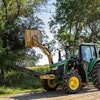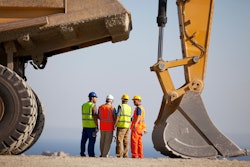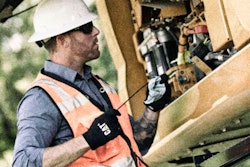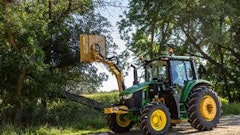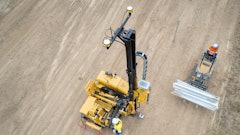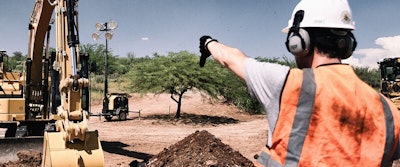
Contractors are taking all kinds of steps to improve workers’ physical safety on the job site: Investing in operator training. Adding cameras and personnel detection systems. Even adopting remote-control equipment that lets operators control machines from a safe distance in dangerous applications.
But there’s another hazard you might not have given as much thought to addressing — noise. Since hearing impairment tends to occur gradually, many workers don't notice until it’s beyond correction. The result can be irreversible noise-induced hearing loss. Prolonged exposure to loud noises is also linked to high blood pressure, heart disease, sleep disruption and increased stress and anxiety.
You can’t eliminate noise on a construction site, but there are some simple strategies you can employ to help protect your team from hearing loss.
Require workers to wear hearing protection
Industrial-grade hearing protection equipment like earmuffs and earplugs is a proven way to block out construction noise. It's a good rule of thumb to require your workers to wear these devices at all times on-site, even if they aren’t operating machinery. Be sure to avoid hearing protection that lodges too far in the ear canal. It may minimize noise, but it can also puncture eardrums and cause debris buildup.
Keep an eye on noise levels on your site
The Occupational Safety and Health Administration (OSHA) recommends keeping workplace noise levels below an average of 85 decibels over eight working hours to protect the eardrums from damage. This free app from the National Institute for Occupational Safety and Health (NIOSH) makes it easy to measure the levels on your site. Consider labeling extra-loud equipment with a hazardous noise sticker to warn workers about the risk.
Take proactive steps to reduce noise exposure
As you’re planning for your next project, think about implementing some of these strategies to reduce workers’ exposure to noise on-site:
- Add noise barriers to equipment like saws and jackhammers. They don’t eliminate noise but block the direct path of sound waves to reduce noise levels.
- Structure your work schedule so fewer people are on-site when noisy tasks — like jackhammering or breaking up concrete — are underway.
- Alternate workers’ tasks between louder and quieter jobs, so they’re not spending all day, every day in a noisy environment. Provide a quiet area on-site where they can take a break from noise.
Invest in (and maintain) quieter machinery
As you’re upgrading or replacing equipment, be sure to add “quiet operation” to your list of priorities. And keep your existing machines in good working order with regular planned maintenance and daily walkarounds. You can avoid a lot of screeching, squealing, clanging and banging when bolts are tight, joints are lubricated and components are well-maintained.
